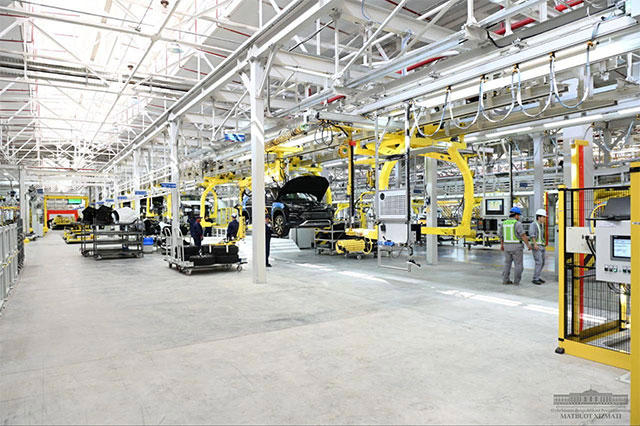
Uzbekistan Plans to Localize EV Battery Production
Uzbekistan Plans to Localize EV Battery Production
Tashkent, Uzbekistan (UzDaily.com) — BYD Uzbekistan Factory, a joint venture in Uzbekistan, plans to localize the production of batteries for electric vehicles, Deputy CEO Shavkatbek Alimov announced.
He said the move marks an important stage in the company’s development and aims to reduce production costs, increase value added, and shorten delivery times for components. The plant has already localized more than 60 types of parts, including seats, windows, plastic body components, fuel tanks, and other interior accessories. “When a supplier is located nearby, production efficiency rises significantly,” Alimov noted.
The next step will be the localization of copper wires involving both local manufacturers and companies within the BYD group. The Chinese company JAH has already built a plant in the Jizzakh region and currently produces 28 types of wires. Sixteen additional types of rubber components are expected to be localized in the first quarter of 2026.
Alimov emphasized that BYD manufactures key components — batteries, chips, and motors — in-house, and that this expertise will gradually be transferred to Uzbekistan.
BYD Uzbekistan Factory was established in September 2023 under an agreement between BYD and Uzavtosanoat, with support from the Ministry of Investments and Foreign Trade. In late June 2025, the plant rolled out its first mass-produced electric vehicle — the BYD Song Plus DM-i Champion — launching serial production of two new-energy models: the C-segment SUV BYD Song Plus DM-i Champion and the BYD Chazor Champion sedan equipped with BYD’s Super DM-i technology.
The plant’s initial capacity is up to 50,000 vehicles per year, targeting both the domestic market and exports to Central Asia. A phased expansion is planned: the second stage envisions US$300 million in investment and annual output of 200,000 vehicles; the third stage will require US$500 million and raise production to 500,000 vehicles per year.